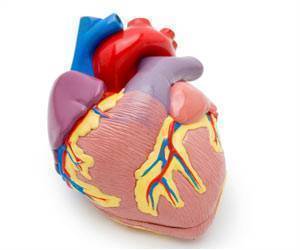Researchers at ULCA have uncovered why the human cardiac cells have lost its ability to multiply.

Unlike newts and salamanders, human adults cannot spontaneously regrow damaged organs such as the heart. However, recent research suggests that mammals do have the ability to regenerate the heart for a very brief period, about the first week of life. But that ability is quickly lost. But if we had it once, MacLellan said, maybe it is possible to regain that ability.
Published in the Aug. 8 issue of the peer-reviewed Journal of Cell Biology, MacLellan's study suggests it might be possible to turn back the cellular clock to a time when cardiac myocytes had the ability to proliferate and re-grow heart muscle.
"These salamanders and other lower organisms have the ability to de-differentiate cardiac myocytes, or take them back to an earlier, more primitive state, which allows them to re-enter the cell cycle, creating new heart muscle," said MacLellan, who also is an associate professor of cardiology and physiology. "In mammals, we've lost that potential. If we knew how to restore that, or knew the reason why adult myocytes can't do it, we could try to figure out a way to use nature's methods to regenerate the heart."
During human development, cardiac myocytes are made by progenitor stem cells and proliferate to form the heart. Once the heart is formed, the myocytes transform from immature cells into mature cells that cannot proliferate. That's not so for newts and salamanders, whose cardiac myocytes can go back and forth between immature, or primitive, states to proliferate and repair damage and then revert back into mature cells once the damage is repaired.
MacLellan believes the reason adult human cardiac myocytes can't do this is quite simple – when the myocytes are in a more primitive state, they are not as good at contracting, which is vital for proper heart function. Because humans are much larger than newts and salamanders, we needed more heart contraction to maintain optimum blood pressure and circulation.
Advertisement
MacLellan said that by temporarily knocking down the proteins that block the cell cycle mechanism, it may be possible to get adult cardiac myocytes to re-enter the cell cycle and revert to a state where they can again proliferate. These therapies would need to be reversible so that the effects of the protein manipulation eventually wear off once the damage is repaired. Then myocytes would become mature again and aid in contracting the regenerated heart muscle. MacLellan currently is looking into using nanoparticles to deliver small interfering RNA to the heart to knock out the proteins that are keeping the myocytes mature.
Advertisement
"People have been talking about the regenerative potential of these lower organisms for a long time and why this does not occur in humans" MacLellan said. "This is the first paper that provided a rationale and mechanism for why this happens."
There has been much talk of using human embryonic stem cells or reprogrammed induced pluripotent stem cells to regenerate the heart. However, it's unknown how much regeneration is possible and how much benefit would come from it.
"From my point of view, this is a potential mechanism to regenerate heart muscle without having to harvest or expand stem cells," MacLellan said. "Each person would be their own source for cells for regeneration."
Source-Eurekalert












